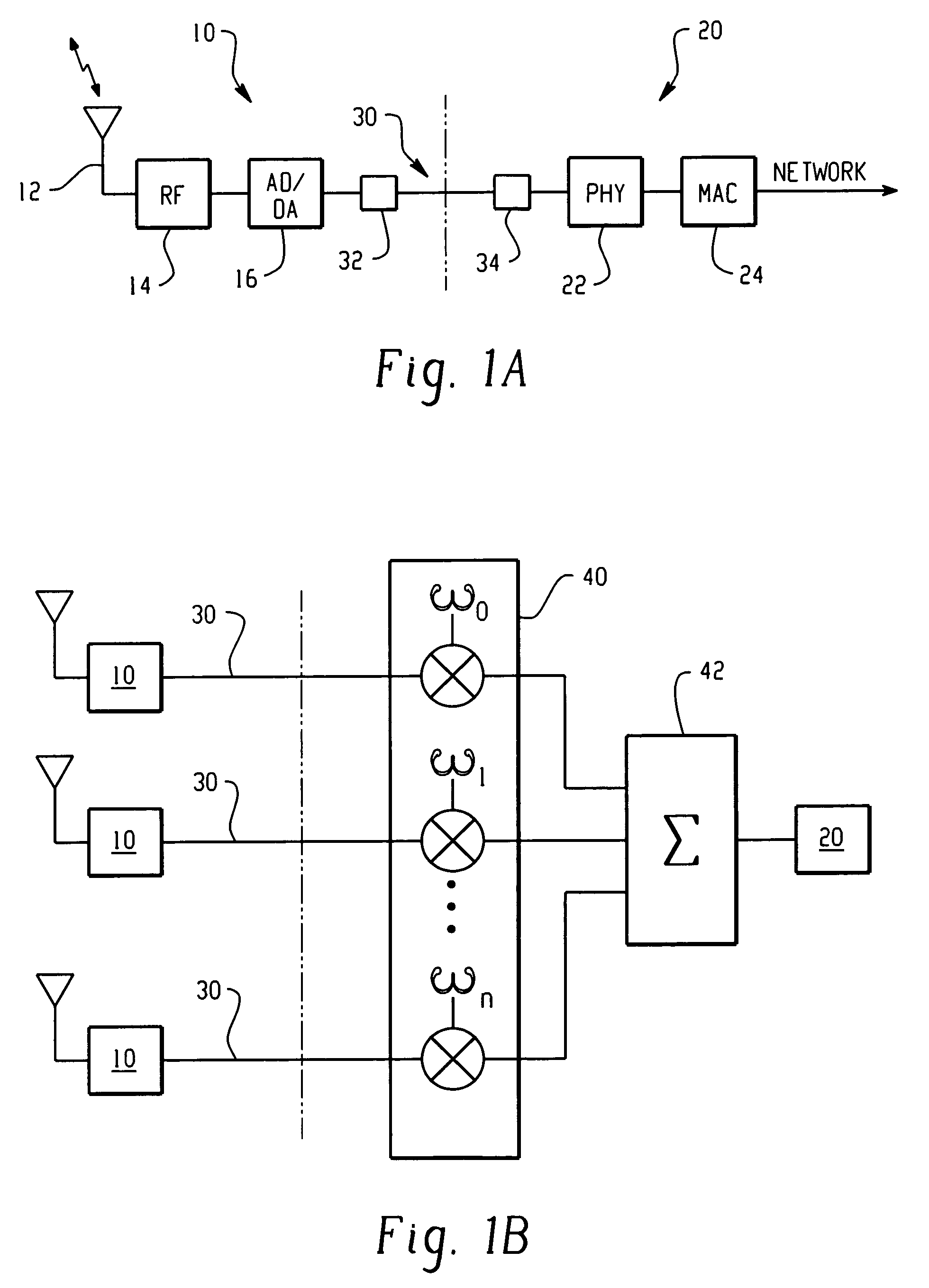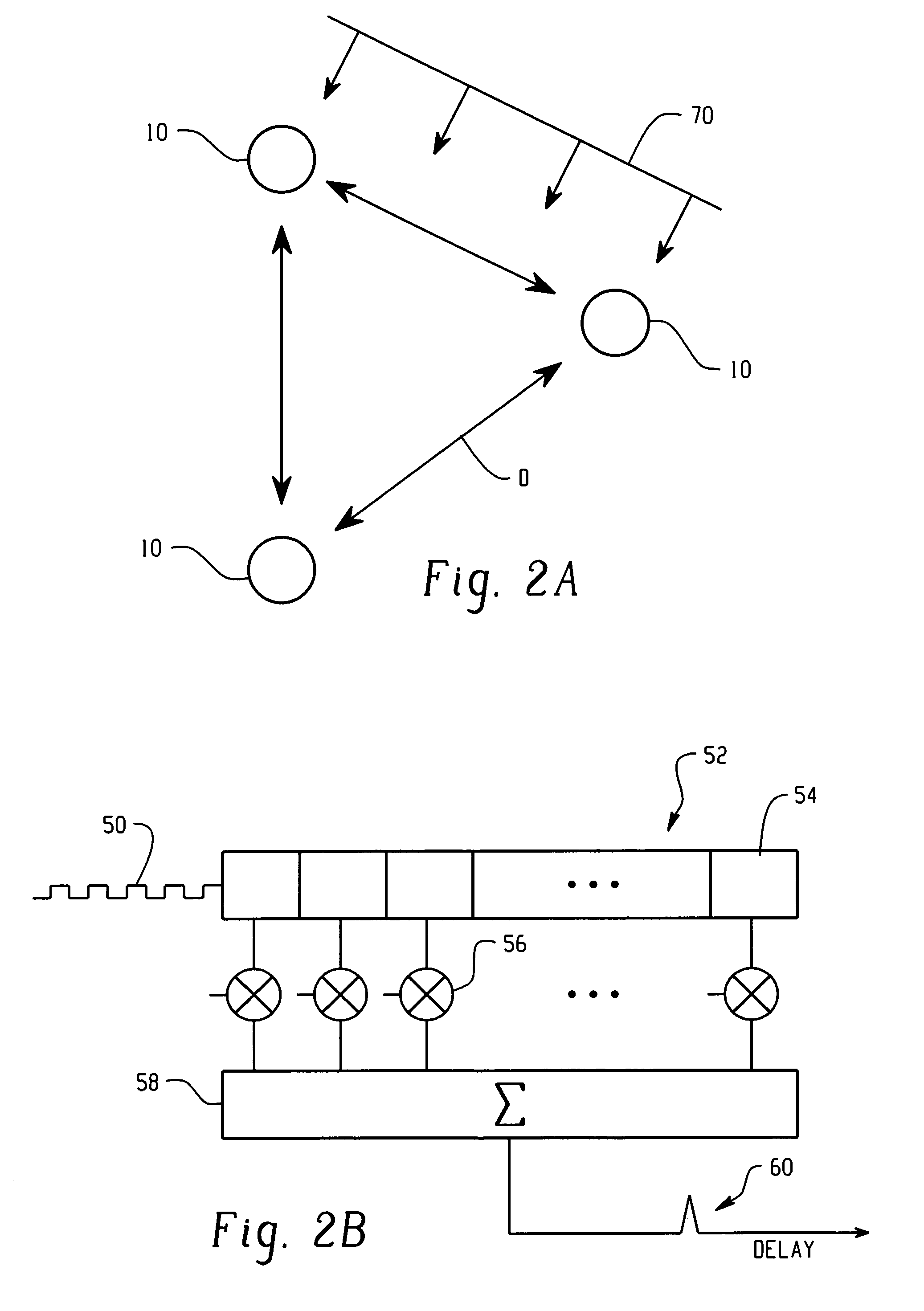Wireless LAN with distributed access points for space management
a distributed access point and wireless technology, applied in the field of wireless local area networks, can solve the problems of limited performance improvement, difficult frequency management task, and crowded wireless spectrum, and achieve the effect of aggressive space management and location based services
- Summary
- Abstract
- Description
- Claims
- Application Information
AI Technical Summary
Benefits of technology
Problems solved by technology
Method used
Image
Examples
Embodiment Construction
[0010]In the present invention, a wireless LAN is contemplated in which the function of the access points are partitioned, with the radio components distributed in space over a coverage area, and implemented in such a way as to form an adaptive directional antenna array. As shown in FIGS. 1A and 1B, the present directional antenna system includes a plurality of RF nodes 10 that cooperate with a separate and distinct network interface assembly 20. As shown in FIG. 1A, each RF node 10 can cooperate with a single network interface 20. Also, as shown in FIG. 1B, a number of RF nodes 10 can all be configured to cooperate with a single network interface 20. In a single system, any number of RF nodes 10 can cooperate with any respective number of network interfaces 20, as is practicable. In any event, the plurality of RF nodes 10 cooperatively form a directional antenna array for transmitting and receiving wireless signals between a wireless client at a predetermined position in space. It ...
PUM
 Login to View More
Login to View More Abstract
Description
Claims
Application Information
 Login to View More
Login to View More - R&D
- Intellectual Property
- Life Sciences
- Materials
- Tech Scout
- Unparalleled Data Quality
- Higher Quality Content
- 60% Fewer Hallucinations
Browse by: Latest US Patents, China's latest patents, Technical Efficacy Thesaurus, Application Domain, Technology Topic, Popular Technical Reports.
© 2025 PatSnap. All rights reserved.Legal|Privacy policy|Modern Slavery Act Transparency Statement|Sitemap|About US| Contact US: help@patsnap.com



